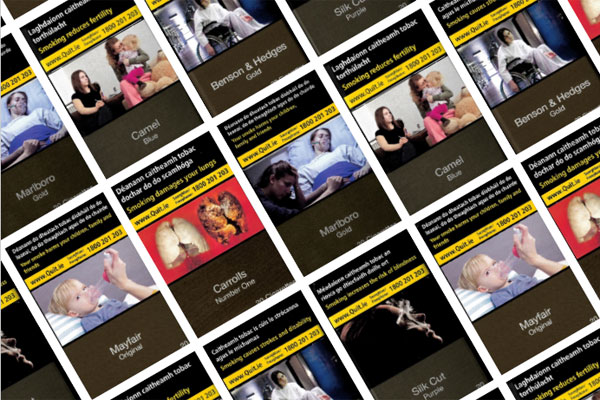Report: Plain Packaging Gaining Momentum
- Featured News This Week Packaging
- November 10, 2021
- 0
- 0
- 4 minutes read


Tobacco plain packaging continues to gain momentum worldwide, according to a new report released by the Canadian Cancer Society (CCS) in conjunction with the ninth session of the Conference of the Parties to the World Health Organization Framework Convention on Tobacco Control, Nov. 8–13. The FCTC recommends member states to consider plain packaging.
Titled Cigarette Package Health Warnings: International Status Report, the CCS study reveals that 21 countries and territories have currently adopted plain packaging compared with nine in 2018. An additional 14 countries are working to implement the measure.
“There is a strong, unstoppable global trend for countries to implement plain packaging,” says Rob Cunningham, senior policy analyst at CCS, in a statement. “Australia was the first country to implement plain packaging in 2012, and now the pace of implementation is accelerating. These developments are very encouraging as plain packaging is a key measure to protect youth and to reduce tobacco use.”
Plain packaging includes health warnings on packages and prohibits tobacco company branding such as colors, logos and design elements. It also requires the brand name to be a standard font size, style and location on the package and the brand portion of each package to be the same color, such as an unattractive brown. Finally, the package format is standardized. Plain packaging regulations put an end to packaging being used for product promotion, increase the effectiveness of package warnings, curb package deception and decrease tobacco use.
Plain packaging has been implemented in Australia (2012), France (2016), the United Kingdom (2016), Norway (2017), Ireland (2017), New Zealand (2018), Saudi Arabia (2019), Turkey (2019), Thailand (2019), Canada (2019), Uruguay (2019), Slovenia (2020), Belgium (2020), Israel (2020), Singapore (2020), the Netherlands (2020), Denmark (2021) and Guernsey (2021) and will be implemented in Hungary (2022), Jersey (2022) and Myanmar (2022).
Plain packaging has been implemented in practice in three countries where packages are imported from a country with plain packaging: Monaco (from France), Cook Islands (from New Zealand) and Niue (from Australia). Plain packaging is under formal consideration in at least 14 countries: Armenia, Chile, Costa Rica, Finland, Georgia, Iran, Malaysia, Mauritius, Mexico, Nepal, South Korea, South Africa, Spain and Sri Lanka.
The number of countries requiring plain packaging is expected to increase even further because of the World Trade Organization (WTO) appeal decision on June 9, 2020, that Australia’s plain packaging requirements are consistent with the WTO’s international trade agreements.
The case followed an unsuccessful legal challenge to plain packaging by the tobacco industry.
There is a strong, unstoppable global trend for countries to implement plain packaging.
The CCS report also reveals growing momentum for graphic health warnings. It found that 134 countries and territories now require pictorial health warnings on cigarette packages, up from 117 in 2018. This represents 70 percent of the world’s population. Canada was the first country to require pictorial health warnings in 2001.
“There is unrelenting international momentum for countries to use graphic pictures on cigarette packages to show the lethal health effects of smoking,” says Cunningham. “It is extremely positive for global public health that more than 130 countries and territories have required picture health warnings and have increased warning size and that so many are moving toward plain packaging,” says Cunningham. “The international trend will reduce global tobacco industry sales and will save lives lost to cancer and other tobacco-related diseases.”
In total, 122 countries and territories have required warnings to cover at least 50 percent of the package front and back (on average), up from 107 in 2018 and 24 in 2008. There are now 71 countries and territories with a size of at least 65 percent (on average) of the package front and back, and 10 with at least 85 percent.
